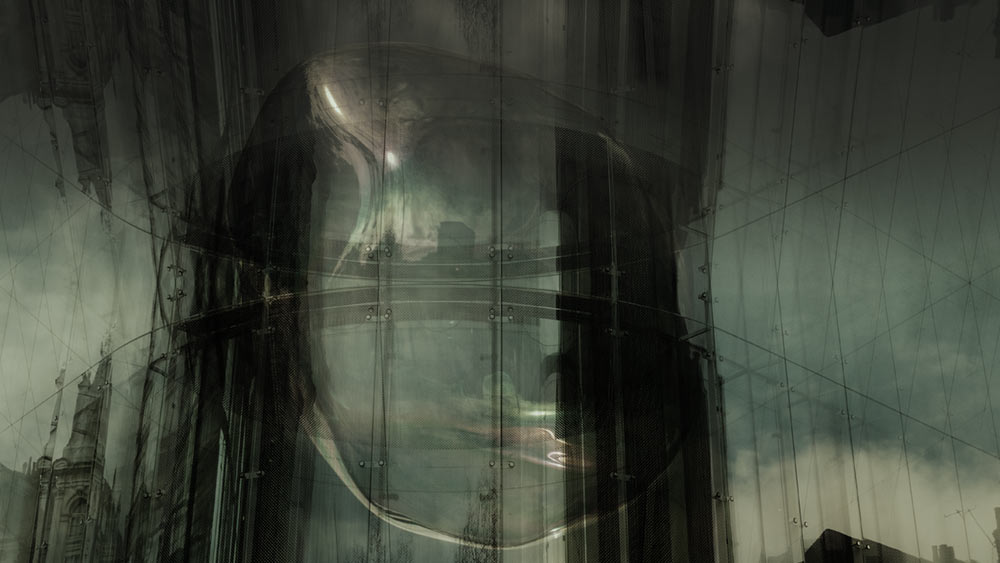Doherty has frequently stated that his work begins with the location, thereby responding to the perceptual field before engaging with a conceptual apparatus. Doherty’s choice of location has assiduously avoided dramatising Derry, preferring to depict the interstices of the city – unpopulated streets, blank façades, dimly lit underpasses, alleys and semi-rural waysides – unremarkable and hence resistant to appropriation by the eye that looks only to capture iconic or ‘significant’ moments. Although far from arbitrary, they are zones of ‘in-distinction’. If obscured or oblique vision is the figure that most characterises his photographic images, circularity – the loop – dominates his time-based work, the one alluding to a world characterised by a lack of political vision, or will, the other to a world enmeshed historically in a cycle of repetition. Whilst Wasteground, Unapproved Road, Alleyway, all 1992, and Hoarfrost, 1991/2012, marked a shift away from the textual screens, the inability to see ahead remains. However, the textual overlays are soon to be replaced by spoken voiceovers as Doherty expands his practice to include slide/tape and video installations. Amongst the first of these are They’re All the Same, 1991, and The Only Good One is A Dead One, 1993, where the narrator alternates between stereotypical identities that inscribe antagonistic positions, but at the same time invoking the extent to which ‘unapproved’ positions are politically silenced.
Hoarfrost gives pause for thought because this seemingly innocuous word recurs in the artist’s voiceover script to the video installation Ghost Story, 2007, a reflection on the act of remembering the trauma of Bloody Sunday: ‘The next day I walked over the waste ground that was now marked by deep tyre tracks and footprints, fixed in low relief and highlighted by a sharp hoar frost.’ Doherty’s repeated reference to ‘hoarfrost’ resonates as the authentic voice of the eyewitness registering the sometimes incidental but perceptual details of a scene. Indeed, it is the unpredictability of how and what an eyewitness remembers of an event (and how this may be silenced by ‘official accounts’) that is the subject of the tape/slide installation 30th January, 1972, 1993.
Increasingly it is the incidental perceptual detail that dominates Doherty’s later work, beginning with a number of photographs from 1993 thematically entitled Incident. Tyre treads etched in the road, plastic detritus and bits of discarded clothing, abandoned cars or interiors, close-ups of shell casings or circuit boards nestled in undergrowth, stains that resemble spilt blood. Ordinarily such details may seem inconsequential, but in Northern Ireland they become charged with a terrible significance. In Doherty’s work they offer the viewer a narrative potential: traces of an event drawing on codes that we recognise from TV forensic crime series, and whose status as ‘evidential truth’ of the past the artist interrogates further in time-based formats. But in this approach too we are confronted with uncertainty – a blurring of the boundaries between the signs of true crime and fiction that is highlighted in the set of diptychs entitled Small Acts of Deception, 1997, where the distinction between ‘real’ and ‘staged’ – or even between ‘informant’ and ‘witness’ – is indeterminable.




